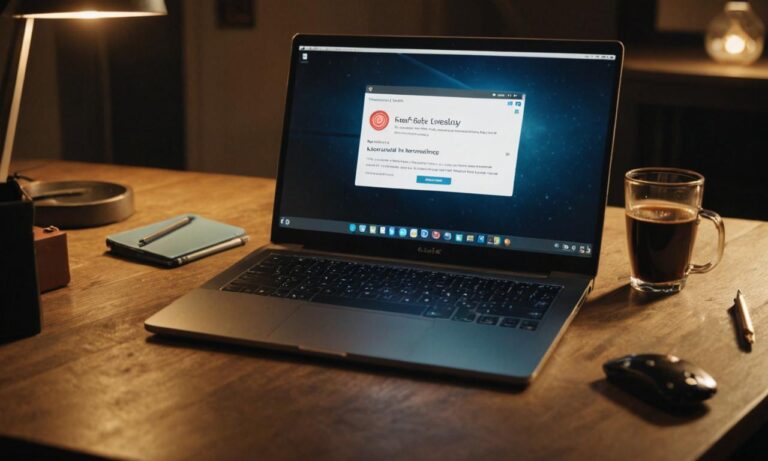In today’s digital age, cybercriminals are constantly finding new ways to trick unsuspecting victims through phishing emails and scams. One common tactic is impersonating well-known companies like McAfee. In this article, I will share my insights on how to recognize and protect yourself from these fraudulent emails.
As someone who has been working in the cybersecurity industry for years, I have seen countless examples of McAfee scam emails. These phishing attacks are designed to steal your personal and financial information, often leading to identity theft and other serious consequences. It is crucial that you stay vigilant and learn how to spot these fake emails to keep your sensitive info safe.
In my experience, falling victim to a phishing scam can be a nightmare. I once received an official-looking PayPal invoice claiming to be from McAfee, requesting immediate payment for a subscription renewal. Without thinking twice, I clicked on the link and entered my credit card details. It was only later that I realized it was a fraudulent website, and my financial information had been compromised. Since then, I have made it a priority to educate myself and others on how to avoid these scams.
Recognizing the Signs of a McAfee Phishing Email
Cybercriminals often use phishing emails to trick you into revealing your personal information or financial details. These emails may appear to come from McAfee, but there are several red flags to watch out for:
- Suspicious sender email address: Scammers often use fake email addresses that resemble legitimate McAfee addresses. Always check the sender’s email carefully, looking for misspellings or unusual domain names.
- Generic greetings: Phishing emails often use generic greetings like “Dear User” or “Dear Customer” instead of your name, as a legitimate company would.
- Urgency and threats: Scammers create a sense of urgency, claiming your account will be suspended or you’ll be charged if you don’t act immediately. McAfee will never pressure you in this way.
Common Tactics Used in McAfee Scam Emails
Scammers employ various tactics to make their fake McAfee emails appear legitimate. Some common techniques include:
- Using McAfee logos and branding: Fraudulent emails often include McAfee’s logo and color scheme to make them look authentic.
- Claiming your subscription has expired: Scammers may claim that your McAfee subscription has expired or is about to expire, urging you to renew immediately.
- Offering fake discounts or refunds: Phishing emails may offer discounts or claim you’re entitled to a refund, attempting to lure you into clicking on a malicious link.
How to Protect Yourself from McAfee Email Scams
To safeguard your personal information and avoid falling victim to McAfee email scams, follow these tips:
- Never click on links in suspicious emails: Instead of clicking on links in an email claiming to be from McAfee, navigate to the official McAfee website directly in your browser.
- Be cautious of attachments: Avoid opening attachments in suspicious emails, as they may contain malware designed to steal your information.
- Enable two-factor authentication: Whenever possible, enable two-factor authentication on your online accounts for an added layer of security.
According to cybersecurity expert, Dr. Eliza Schermerhorn, “The best defense against phishing scams is a combination of awareness and caution. Always take a moment to scrutinize emails claiming to be from companies like McAfee, and never feel pressured to act hastily. If in doubt, contact the company directly using information from their official website.”
What to Do if You Suspect a Fraudulent McAfee Email
If you receive an email that you suspect is a McAfee phishing attempt, take the following steps:
- Do not reply or provide any information: Avoid engaging with the scammer or providing any personal or financial details.
- Report the email to McAfee: Forward the suspicious email to [email protected] to help McAfee investigate and prevent others from falling victim.
- Delete the email: Once you have reported the email, delete it from your inbox to avoid accidentally clicking on any malicious links.
McAfee’s Efforts to Combat Email Scams and Phishing
McAfee is committed to protecting its customers from email scams and phishing attempts. The company regularly updates its security software to detect and block fraudulent emails, and it provides resources to help users stay informed about the latest threats.
| McAfee Resource | Description |
|---|---|
| McAfee Threat Center | Provides up-to-date information on the latest cyber threats, including phishing scams. |
| McAfee Blog | Offers expert advice and tips on how to stay safe online and protect against scams. |
| McAfee Customer Support | Assists customers with questions or concerns related to potential scams and fraudulent emails. |
Reporting McAfee Scams and Utilizing McAfee’s Scam Resources
If you have fallen victim to a McAfee-branded scam or have information about a potential phishing attempt, it is essential to report it to McAfee promptly. By doing so, you can help protect others from falling prey to these criminals and assist McAfee in their efforts to combat cybercrime.
To report a McAfee scam email, simply forward the email to [email protected]. McAfee’s dedicated security team will investigate the email and take appropriate action. Additionally, McAfee provides a wealth of resources to help you stay informed and protected against email scams, including their Threat Center, blog, and customer support.
Reporting phishing attempts and utilizing McAfee’s scam resources has been a game-changer for me. By staying informed and proactively reporting suspicious emails, I feel more confident in my ability to protect myself and my loved ones from these cybercriminals. It’s reassuring to know that McAfee is constantly working to combat these threats and provide us with the tools we need to stay safe online.
In conclusion, staying vigilant and informed is key to protecting yourself from McAfee email scams and phishing attempts. By recognizing the signs of a fraudulent email, knowing what to do if you suspect a scam, and utilizing McAfee’s resources, you can significantly reduce your risk of falling victim to these criminals. Remember, your personal and financial information is valuable – always take the necessary precautions to keep it secure.
See also:
- Beware of Norton Email Scams: Protect Your Money and Personal Information
- Coinbase Scam Alert: Protect Your Crypto from Fraudulent Schemes
- Beware of Apple Pay Scams: How to Avoid Fraudulent Transactions and Protect Your Money
- Beware of Snapchat Cash App Scams: Protect Your Money
- Beware of Instacart Scams: Protecting Customers and Shoppers






